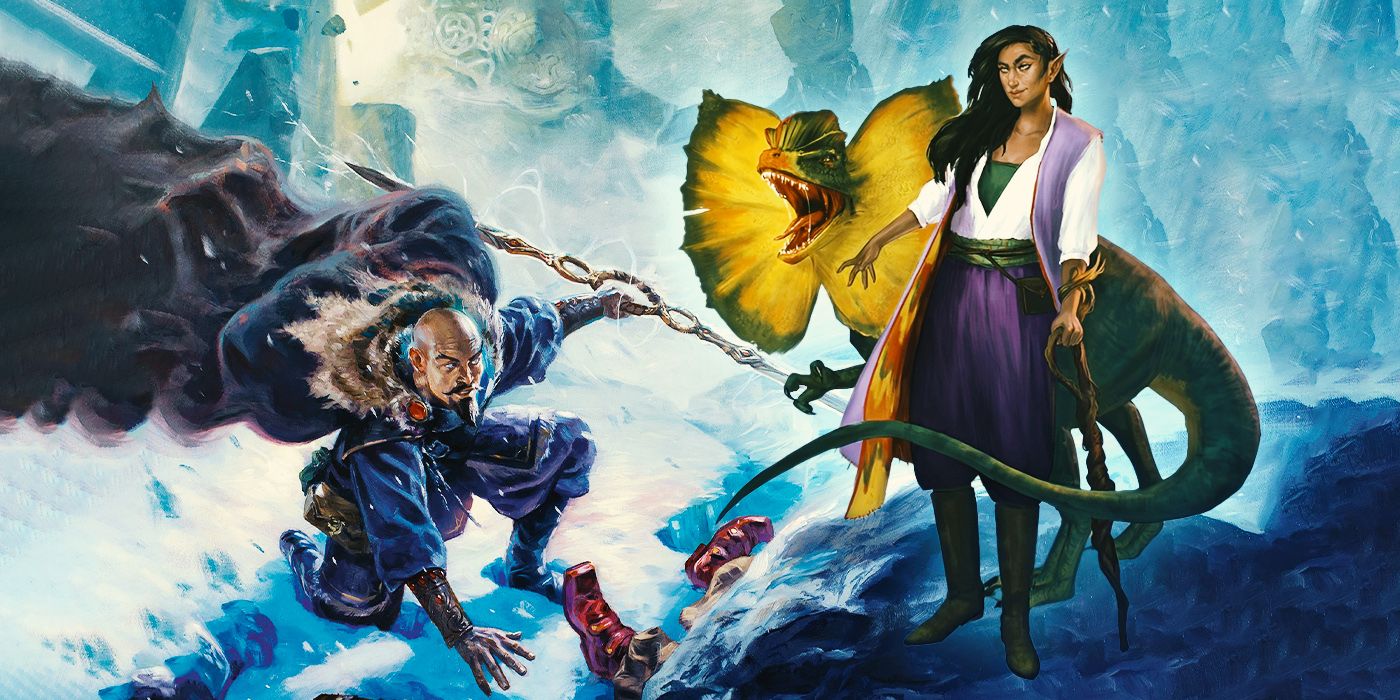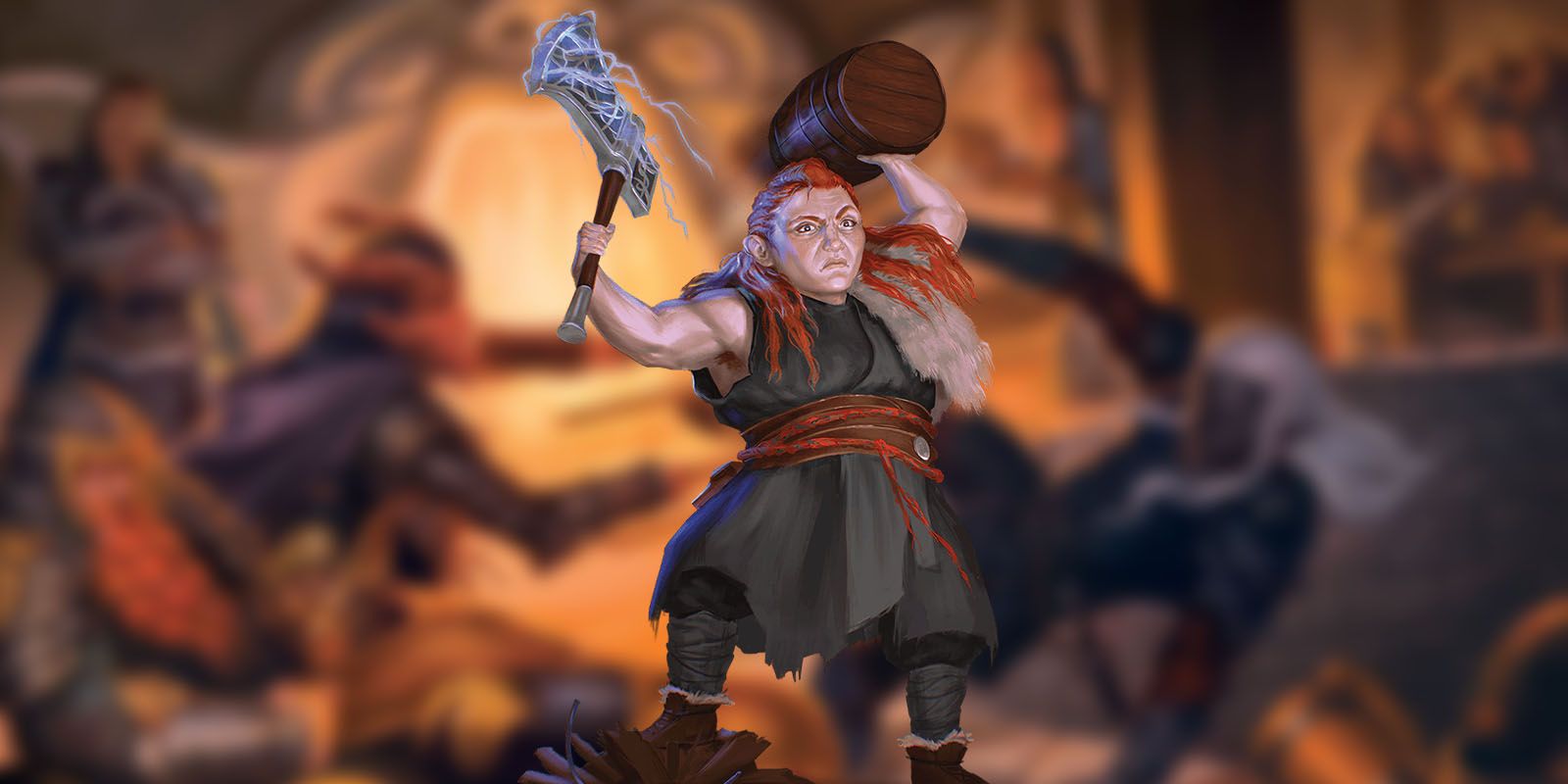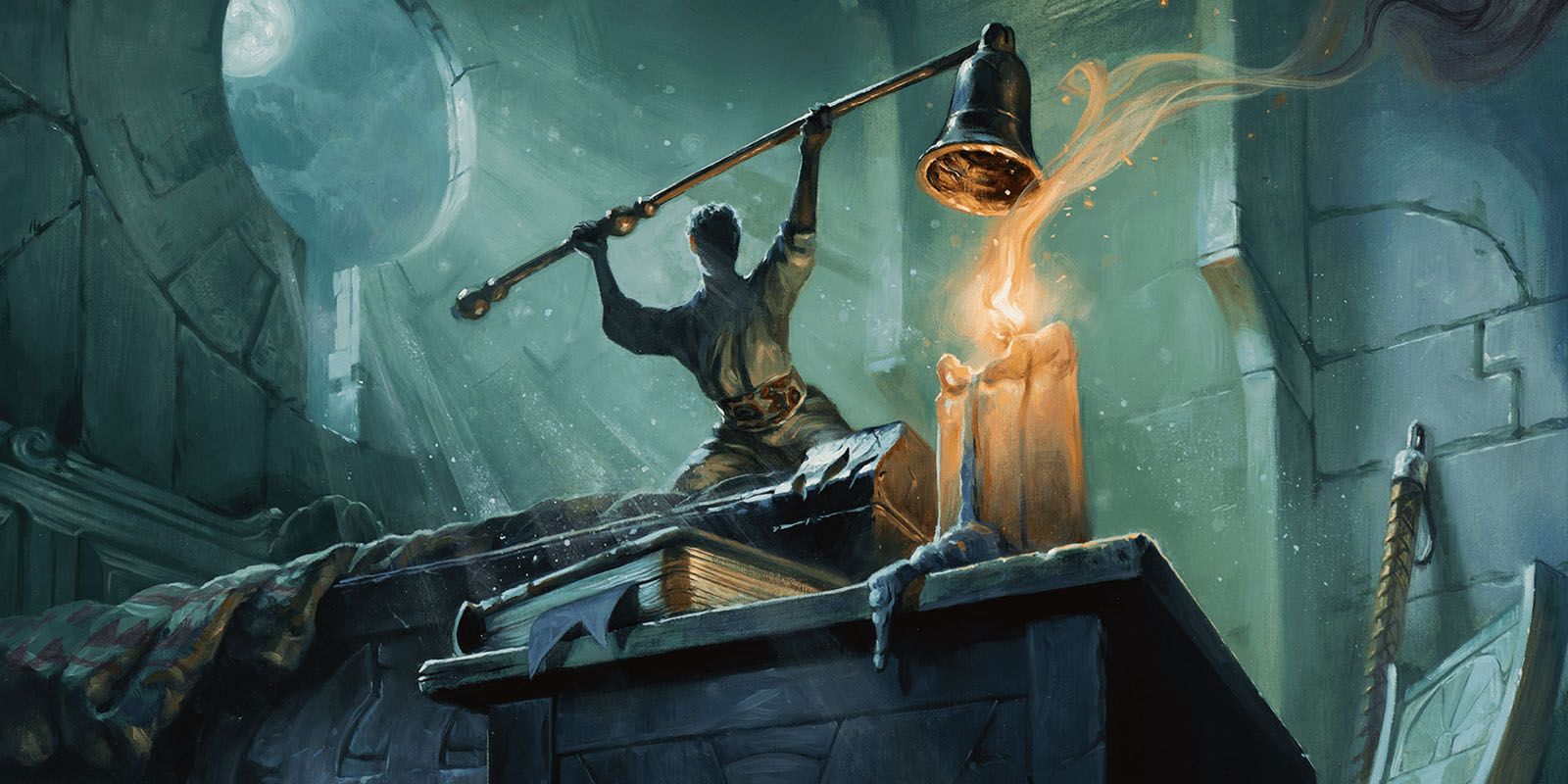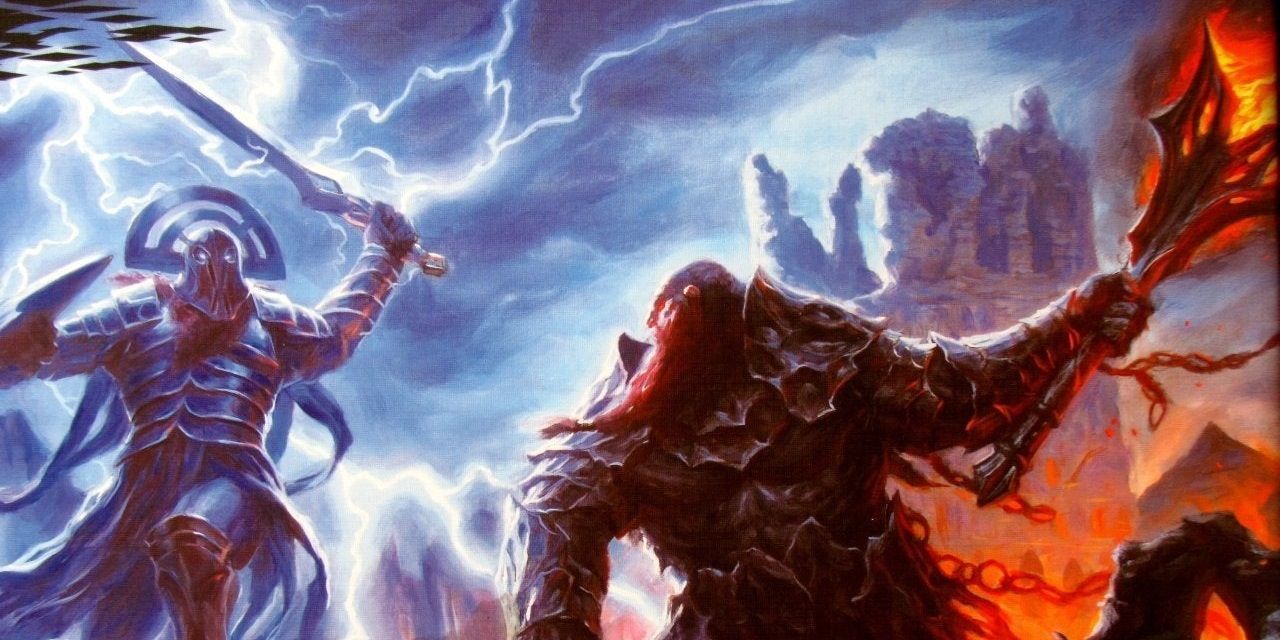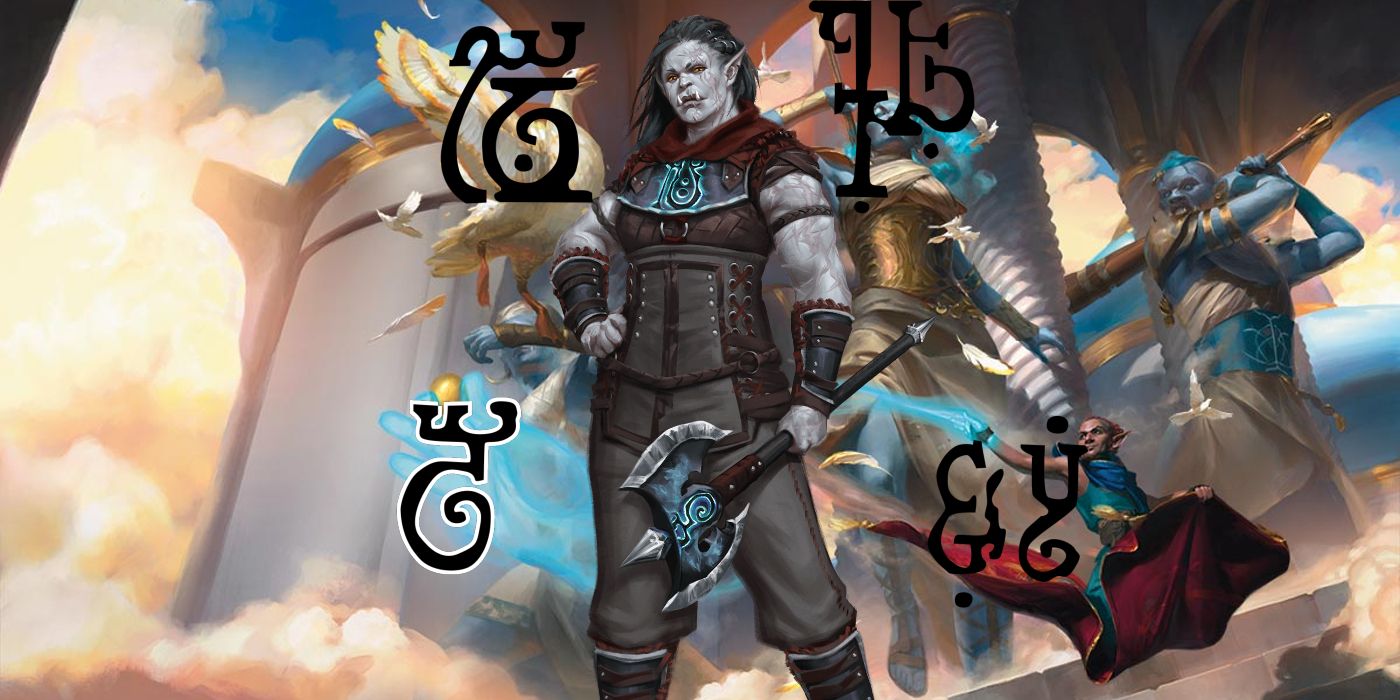The first chapter of the new Dungeons & Dragons source book Bigby Presents: Glory of the Giants deals with character creation, and it adds a variety of new options for play. Although it might seem like a book focusing on giants might only be useful for characters with giant blood in their veins, the new options don't only apply to firbolgs and goliaths. With a new subclass as well as several new backgrounds and feats, Glory of the Giants makes it easy to build characters that are larger-than-life in memorability even if not in stature.
In total, the new material in Glory of the Giants that directly contributes to choices for character building amounts to one subclass, two backgrounds, and eight feats. The book offers advice on how to connect a character using any of these options to the lore of the giants, whether to draw a direct line of ancestry, draw power from an artifact, or worship the gods of the giants. No matter what angle is taken to integrate the new DnD character options, the additions add a solid amount of flavor and potential to any build.
The Path Of The Giant Is A New Barbarian Subclass
The new DnD subclass added in Bigby Presents: Glory of the Giants is designed for barbarians who want to tap into primal power. Path of the Giant barbarians grow in size when they rage, a feature that scales with leveling. Earning enough XP can infuse the weapons that raging Path of the Giant barbarians use with extra power and eventually increase their size to Huge if they so choose. Depending on the player and dungeon master, a barbarian transformed through rage can either maintain their fundamental appearance at a larger scale or change into a giant-like or even Elemental form.
Perhaps the most fun feature that Path of the Giant barbarians can employ on the battlefield is Mighty Impel, which allows them to hurl smaller creatures to other spaces within range. This could be used to safely move allies or reposition enemies, with the possibility to deal damage by tossing a foe onto a space that doesn't support them. Path of the Giant barbarians can also fool around out of combat, with the third-level ability to learn the druidcraft or thaumaturgy cantrip opening up creative possibilities that other DnD barbarians might not be able to access.
New Bigby Presents: Glory of the Giants Backgrounds
Both backgrounds added to Dungeons & Dragons 5e via Bigby Presents: Glory of the Giants focus on giving players a connection with the old magic that belongs to the giants, with one centering on a character's formative years and the other arising through study. A character with the Giant Foundling background grew up among giants and leeched some power from their environment, while a Rune Carver learned Rune Magic through diligent work. Both of these options provide interesting magical potential and roleplaying opportunities alike, as characters with deep connections to giants are unlikely to encounter many people who share their experiences in most campaign settings.
Giant Foundlings gain some benefits when it comes to resilience, with skill proficiencies in Intimidation and Survival and a number of suggested personality traits that mostly speak to a determined mindset. Rune Carvers are better for characters focusing on an intellectual and artistic approach, with proficiencies in History and Perception and a set of artisan's tools. The principal shared features of the two Bigby Presents: Glory of the Giants subclasses are the knowledge of the Giant language and the ability to tap into the magic of the giants, although the latter feature presents itself in very different forms.
Strike Of The Giants Leads Into Many New D&D Feats
Although it's possible for Dungeons & Dragons characters with different backgrounds to select the feats in Bigby Presents: Glory of the Giants, they also link to the new backgrounds introduced in the book. Of the eight new feats available, seven are connected to Giant Foundlings, as the basic Strike of the Giants feat available to Giant Foundlings or characters with Martial Weapon Proficiency serves as the prerequisite for a variety of third-level feats. Characters with the Rune Carver background or a Spellcasting Feature have access to the Rune Shaper feat instead, which becomes more versatile as proficiency bonus increases.
Strike of the Giants comes in a number of types, allowing players to inflict damage correlating with their chosen variety once per turn when hitting a target with a weapon attack. The selection of possibilities connects to various types of giant, with cloud, fire, frost, hill, stone, and storm strikes available. Some of these force saving throws upon enemies to inflict conditions or various disadvantages, while others stick to the basic damage. At fourth level, each variety can grant players more powerful benefits associated with the following feats:
- Ember of the Fire Giant
- Fury of the Frost Giant
- Guile of the Cloud Giant
- Keenness of the Stone Giant
- Soul of the Storm Giant
- Vigor of the Hill Giant
Rune Shaper Is A Powerful Glory of the Giants Feat
The Rune Shaper feat offers a couple of multifaceted advantages, coming in the form of comprehend languages and Rune Magic. The ability to cast comprehend languages without a spell slot once a day gives Rune Shapers the potential to easily interact with people or creatures that can speak any language, a tool of enormous advantage for solving mysteries and resolving disputes. Rune Magic unlocks the knowledge of a number of runes equal to half of the character's proficiency bonus, which can be inscribed onto objects once per long rest to allow for spellcasting.
Each of these runes is associated with spells that have already been introduced in DnD 5e — the Death rune allows players to cast inflict wounds, for example, while the Fire rune gives spellcasters the power of burning hands. The most interesting twist on the formula comes in the ability to invoke an inscribed rune without using a spell slot or material components with the side effect of locking out use of the spell until the next long rest. Discerning players can gain a lot from balancing the expenditure of spell slots and these invocations as long as they properly understand the risk of cutting off access to any specific spell.
No matter what strikes the fancy of players or dungeon masters among the subclass, background, and feat options in Bigby Presents: Glory of the Giants, the new sourcebook offers plenty of new ways to bring variety to the game table. All of these new Dungeons & Dragons options will require characters to possess at least some interest in the world of the giants, but the lack of any specific species requirements opens the doors fairly wide.

